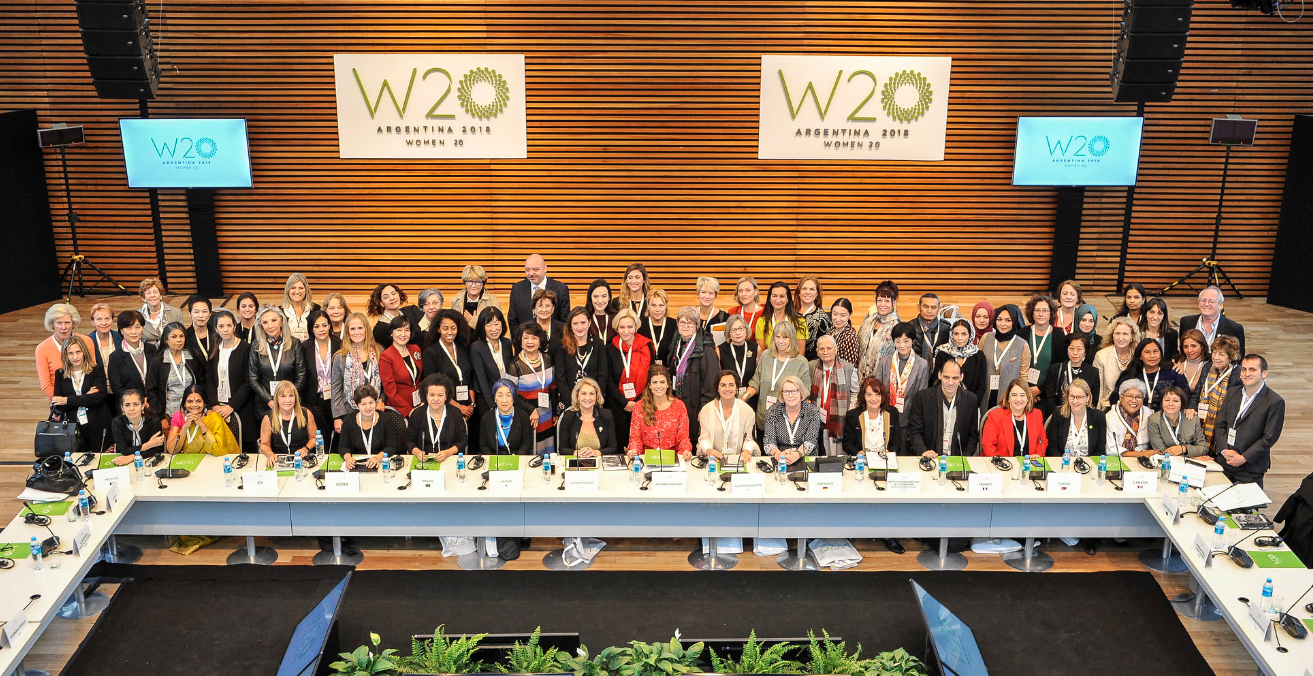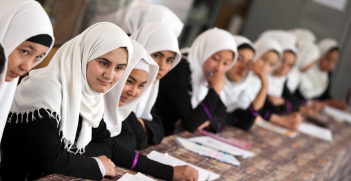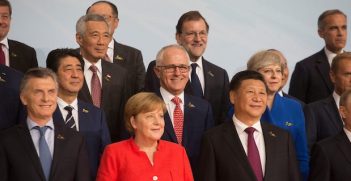Women’s Workforce Participation: A Global Agenda Facing Global Challenge

Women’s participation in the workforce is a priority issue in the global agenda for women’s equality. With the rise of COVID-19, commitments to advance women’s workforce participation may be overshadowed by more immediate concerns.
Of course, there’s nothing new here. In particular, workforce participation was flagged by the 1995 Beijing Declaration and Platform for Action, and sits firmly in the United Nations 2030 Agenda for Change under Sustainable Development Goal (SDG) 5.
More recently, the issue of women’s workplace participation has been taken up by the pre-eminent global economic steering committee, the G20. In 2014, under Australia’s presidency, G20 leaders committed to reduce the gender participation gap in formal labour markets across G20 economies by 25 percent by 2025 (“25 by 25”), while also outlining country strategies to improve global growth.
As G20 host in the following year, Turkey established the W20, an engagement group specifically focused on advancing the G20 agenda for women’s economic status. The W20 has met on the sidelines of the G20 each year since 2015.
Taking these steps, the G20 has made it clear that women’s workforce participation isn’t just a moral right, but an economic necessity. Bringing more than 100 million women into the global labour force would provide a massive boost for economic performance and productivity.
Last year a joint ILO-OECD report prepared for G20 leaders meeting in Japan noted that the gender gap in workforce participation was in decline across the G20, with most nations on track to meet the “25 by 25” goal. It seems to be good news. Notable workforce participation gains were reported for Japan, Argentina, Brazil, and Korea. However, for some nations, including Mexico and Saudi Arabia, any gains continue to be undermined by an otherwise gaping gender gap, and so the overall picture remains a challenging one.
Look a little closer and the report points to more mixed outcomes, including the gender pay gap. So while there may be more women participating in the workforce overall, women continue to be over-represented in low-paid and casual jobs and underrepresented across management and leadership roles. As Julia Kulik noted ahead of the Osaka G20 meeting , there remains “a stark disconnect between the G20’s goals on engendering gender parity and the lived reality of women in many of the countries represented” at the G20 table.
This is one of the many challenges facing Saudi Arabia as G20 host in 2020. And as Erin Watson-Lynn notes, although starting from a lower base on gender equality issues, indications so far suggest that Saudi Arabia is not taking this challenge lightly.
But, as the world faces up to the reality of COVID-19, the challenge of advancing women’s workforce participation in particular, has just become exponentially more difficult.
Immediate response measures to COVID-19, including self-isolation, social distancing, and restrictions on travel have already bought “flexible work” and “virtual meetings” and “online or tele-working” to the fore for a number of businesses. Tech companies like Facebook, Google and Twitter have taken the lead, with others following suit.
Over the long term, most businesses – from large to small – will have to rethink their approaches to the traditional sites, structures, and patterns of work. Perhaps that’s not such a bad thing. And as innovations in the way we work emerge, they may provide a very slim silver lining on an otherwise dark cloud.
But there’s also a very real downside to these developments. Working from home may work for some, but it becomes complicated when schools, childcare, and aged care institutions are also forced to close – blurring the line between formal work and unpaid caring responsibilities. In these areas, women still bear the largest load.
Additionally, for those caught in casual, contingent, and informal work arrangements, with little or no access to additional entitlements including paid leave, the motivation and capacity to “self-isolate” is sharply reduced. And access to the infrastructure and tools of the digital economy is not always guaranteed, making it difficult for some to engage within the parameters of flexible or online work arrangements.
More worryingly, these are the workers who are most vulnerable in the event of an economic contraction, and once pushed out of a position of employment, no matter how insecure, it can be harder to find a way back in. Big corporates, national governments, and global institutions have a role to play to reduce the immediate and long term risks to jobs and livelihoods.
While this isn’t an issue that only affects women, it is fair to say that women in Australia and across the globe are disproportionately represented in less secure, lower paid forms of employment. Without targeted and coherent policy measures in place, the short- and long-term workforce impacts of COVID-19 are likely to have a negative impact on these individuals, and on the global agenda to improve women’s economic status. The latter also has implications for the global economy and notions of inclusive growth over the long term.
G20 nations are already considering the broad market and economic impacts of COVID-19, and leaders will no doubt address the issues when they meet in Riyadh later this year. But there’s a lot to consider in an already crowded agenda, and commitments to advance women’s workforce participation may be overshadowed by more immediate political and public health concerns.
The W20 — which engages across a range of issues related to workforce participation, financial and digital inclusion, and inclusive decision-making — is well positioned to advocate on this issue, as are other G20 engagement groups.
But workforce participation is not just a women’s issue, nor is it simply an issue for a small group of global leaders to address. Given its significance for our shared economic, social, and cultural wellbeing, we can all claim a stake in women’s economic participation and empowerment, ensuring it stays on the national agenda and in the global spotlight through the COVID-19 crisis, and into the future.
Professor Caitlin Byrne is the director of the Griffith Asia Institute. Her research is focused on Australian diplomacy with a special interest in Australia’s engagement in the Asia-Pacific region.
This article is published under a Creative Commons Licence and may be republished with attribution.





